There Is Nothing Left to Say On The Invisibles
3.03
Una is the Superior Jerry
by Travis Hedge Coke
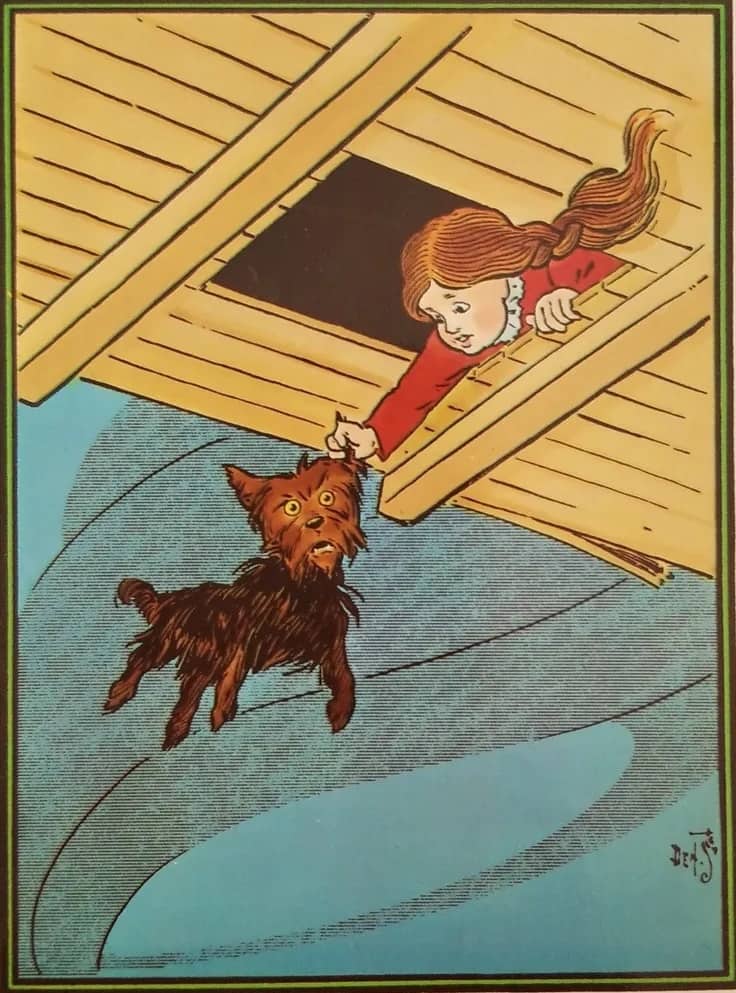
In Kansas and Oz, Toto is the one animal who never seems to talk.
Almost everybody disappoints you if you give them long enough. Somebody disappointing you is not great mark against them. It is no killing stroke.
You, yourself. You disappointed somebody. Still, here you are.
King Mob was a sharp commercial move for The Invisibles. The Lorelai Gilmore of the alt-wave conspiracy set, a gun-toting cool guy for people for whom enjoying a gun-toting cool guy could only ever be feigned as ironic. People who clicked on sites like Disinfo, Daily Konspirazy, and Now Hiring Sexy Canadian Interns, but then pretend they are too cool for all that.
King Mob has to be less quality than the authors who control him. Mob has to be less savvy, less put together, a bigger screw up than any writer or artist on The Invisibles. He is not less savvy because the plot will not work without him misapprehending a scenario, which is a common pitfall in fiction. King Mob has to be behind everyone, including us, because if he is not, we do not like him.
One of Gideon Starerzewski’s last actions in 1999, include surrendering the name and guise, King Mob, to whoever picks it up after. Gideon was not the first King Mob; why be the last? King Mob is not that important. King Mob is a cool coat, a sneer, a pose you put on.
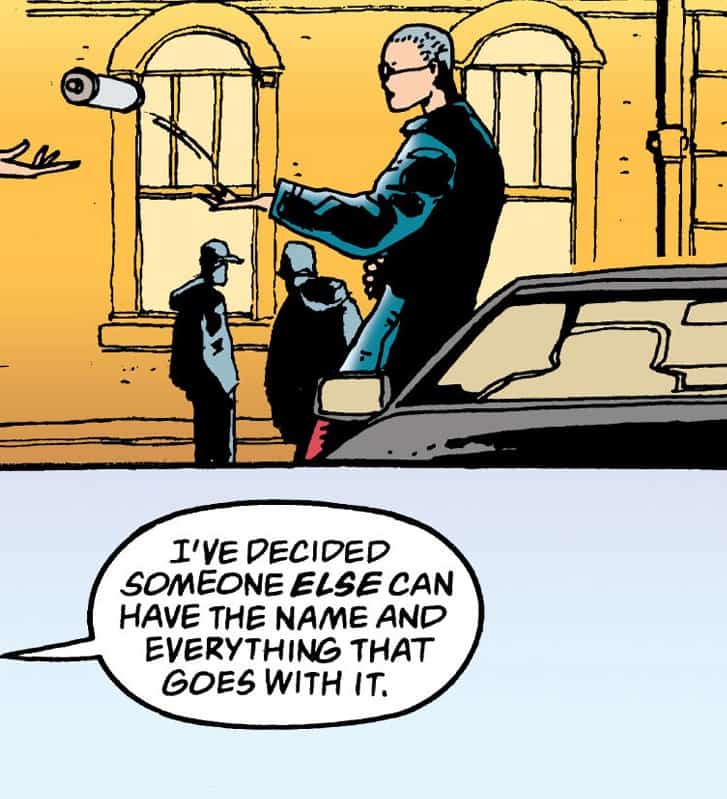
Before passing them on, we slowly might come to know that his hard callous average joe tough guy real guy guy guy pose is not him. It is not even his coat or boots. King Mob, him, is the femme of The Invisibles, in his black leather jacket. A tantric adept who knows when to play sexually and socially naive.
It can be hard to look at other characters in The Invisibles, who get less play than King Mob, or less play than nearly anyone, and not want more. Lives are implied, throughout the comic. Full lives. And, what revelation to us could be in following Phil or Dora in their lives, in their awakenings beyond just being so darn lucky aren’t they just so darn lucky to have once in their time passed by a special magic man.
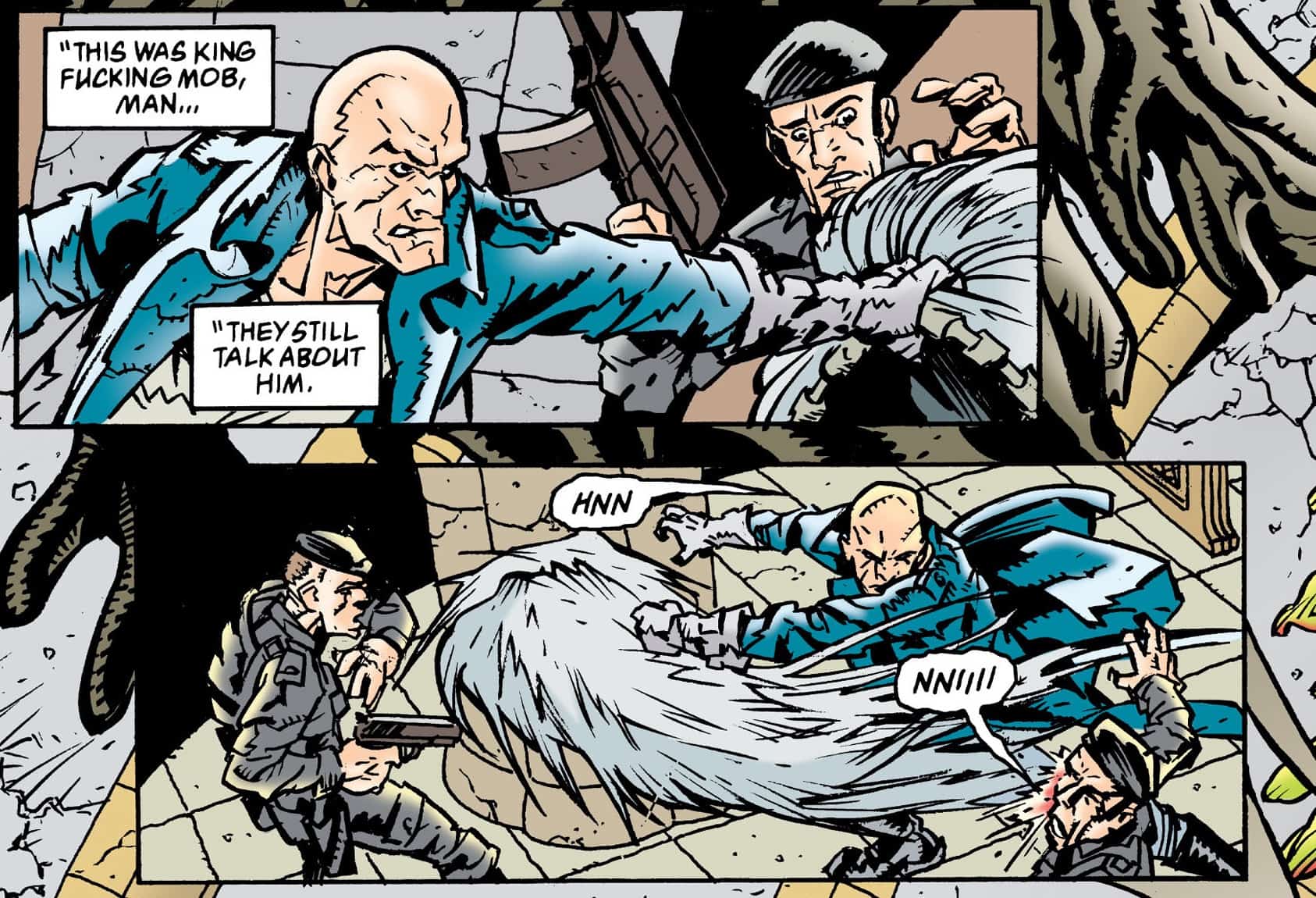
Billy Chang, Ragged Robin, Jolly Roger, Lord Fanny, Jack Frost, Boy, Edith Manning, Mad Tom, Bootsy Collins… all better than King Mob at being some part of King Mob. But, they are not Kirk Morrison. Or, his King Mob.
Chang and Collins are real people, Brilliant Billy Chang having lived and disappeared in England in the early 20th Century, and Collins being still alive, musician, celebrity, cool guy. Chang is the “midwife,” that Starerzewski-Mob, as a fairy godmother, could be, but gets too caught up playing cool guy to be. Collins is the cool guy Starerzewski really could be, if he would stop murdering people.
Bootsy Collins carries no gun.
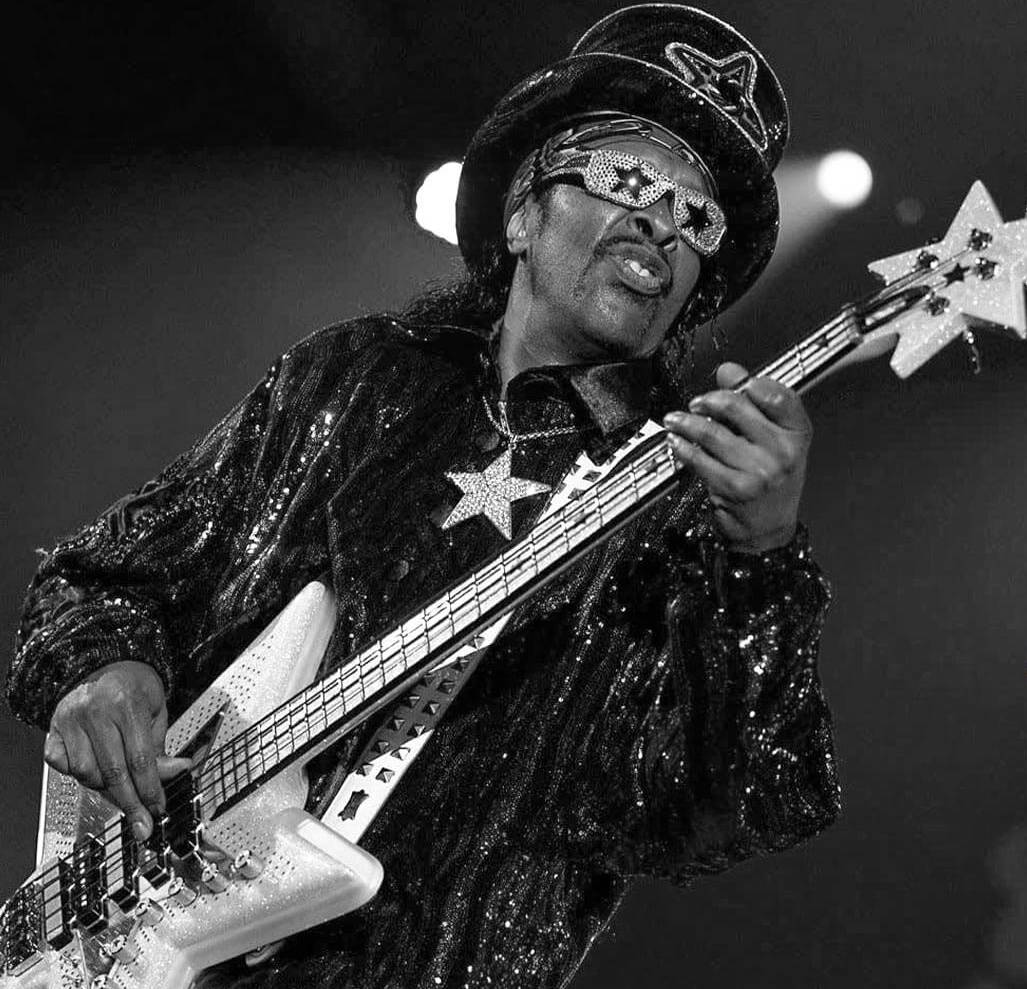
All Robin has to do in order to be better at King Mobbing than King Mob, is to dress in leather and strike a pose. Helga is a gate though which the theory warrior aspect of Mob is given a functional and less gun-phallic form.
In writing and hermetics, Robin and Helga outdo Starerzewski-Mob because he admits to his shallowness, but rebels against it. The yessir, nosir, threebagsfull rebellion of Starerzewski is against himself.
Boy becomes Mob’s “antimatter double,” his Star Trek parodic, and is instantaneously so cool and on the ball she grasps her purpose in the universe and goes and lives it while he remains fiddling around with murder penis.
Starerzewski, in being King Mob, is trying to be the earlier King Mobs, in the Invisible Order, and trying to be the king for the mob and well-armed vox populi. He is living in traditions.
Jack Frost, a little messiah, and Lord Fanny, the big messiah, are the christlike, the Osirian, the self-conscious transgressive bringer of dawn who Starerzewski dreams to be.
Starerzewski-Mob does dream it. Gideon Stargrave, the fake memories or shallow recurrence. The glam paff of the old style paparazzo flash cube in the final holy revelation. In his dreams he is Diabolik, Batman, Jerry Cornelius.
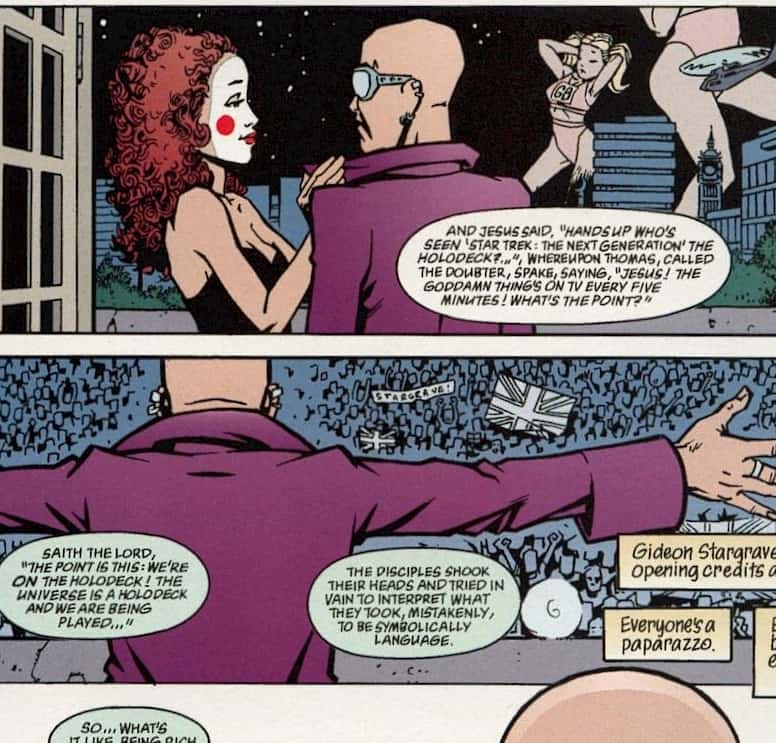
But, Gideon Stargrave a rip off of Jerry Cornelius (as is Starerzewski-Mob), and even in the classic canon of Michael Moorcock, Una Persson is a better Jerry than Jerry is. It is Una who can sidestep, leap over, or maybe not even face some of the annoying shortcomings Jerry has to lock horns with, Una who makes his sister-lover happy and keeps her alive, Una who puts the final death into those Jerry would, who wears his clothes more stylishly than he. King Mob does not have to be Gideon or Starersewski.
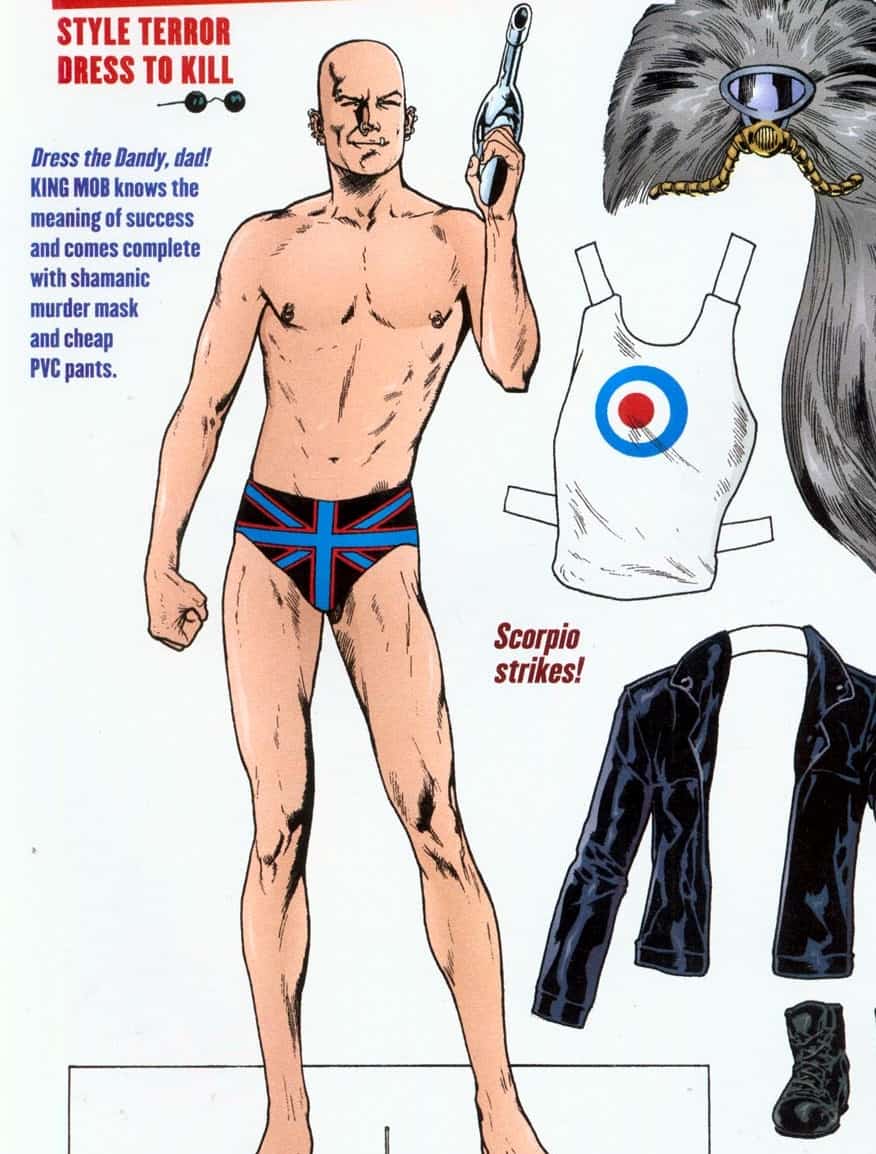
King Mob transforms something internal, living memory, memory in the present, into something externalized inside himself. We can dress a way, act a way, to externalize something internal, but to turn an internal event into an internal performance is something we all do, in play, from our earliest days, but also something which may take practice in our adulthood.
Starerzewski-Mob is as much Jason King as he is Jerry Cornelius, and the first episode of Jason King’s solo television series is entrenched in a commercial acknowledgment that someone else would be better suited to being Jason King the sell than Jason King.
The queerness of The Invisibles is not despite whatever cishet-seeming people and how much of the comics’ panels and plots they dominate, but because let free into our lives, our lives overtake them in panel and page-count. Our lives and our plots outpace them. Grant Morrison may have sometimes modeled themselves on King Mob and transfigured Mob to sort their own life and image, but Morrison is as much Robin or Boy or Helga and so, too, the artists. Boy is a Phil Jimenez character, a Phil Jimenez expression and window. Ragged Robin is a creation of Jill Thompson and a dialogue, a dialectic, and analog for and of Jill Thompson.
Jason King may not be as homosexual as his originating actor, but he is always, all ways so very veritably in veritas gay.
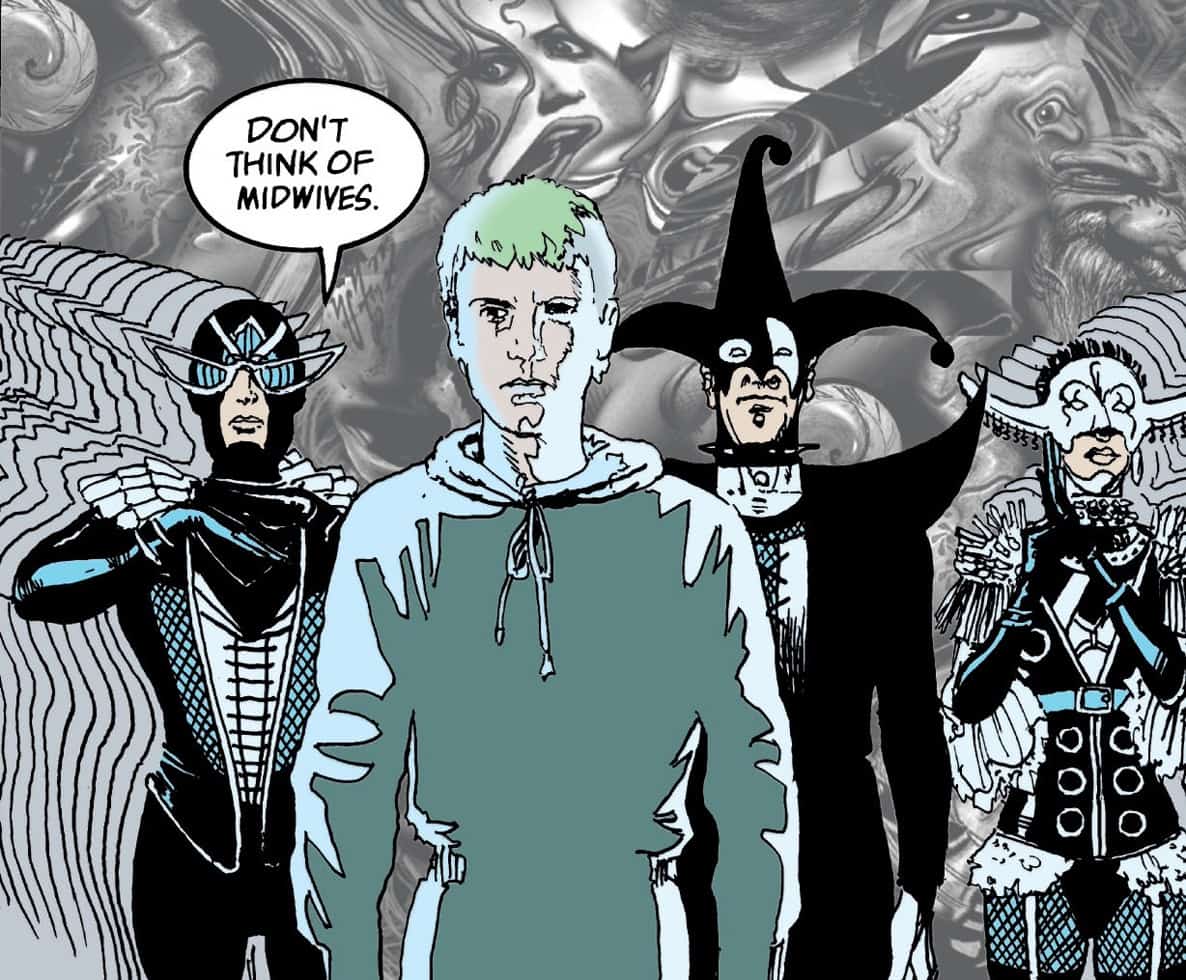
Tramp tramp down and up the field. The proper touch and a march here.
Take your own internal energies and contextualize them into internal performance, performance for yourself. Take something which bothers you and move it to a performance inside yourself, give it stock features, easy parameters. Story inside.
The Invisibles is a better comic as it exists in the world than it is a comic that exists on the page. The comic which was received on the page and in those early readings and in received wisdom has limits, flaws, misfires which the living comic in our lives can shed, overcome, surpass and super-pass. The comic in our world gets to be unconquerable and unending. It can quest and grow and achieve scales the panels and pages with their seemingly cishet perspectives and emphasis on cishet white men can only hint to or try to pin down.
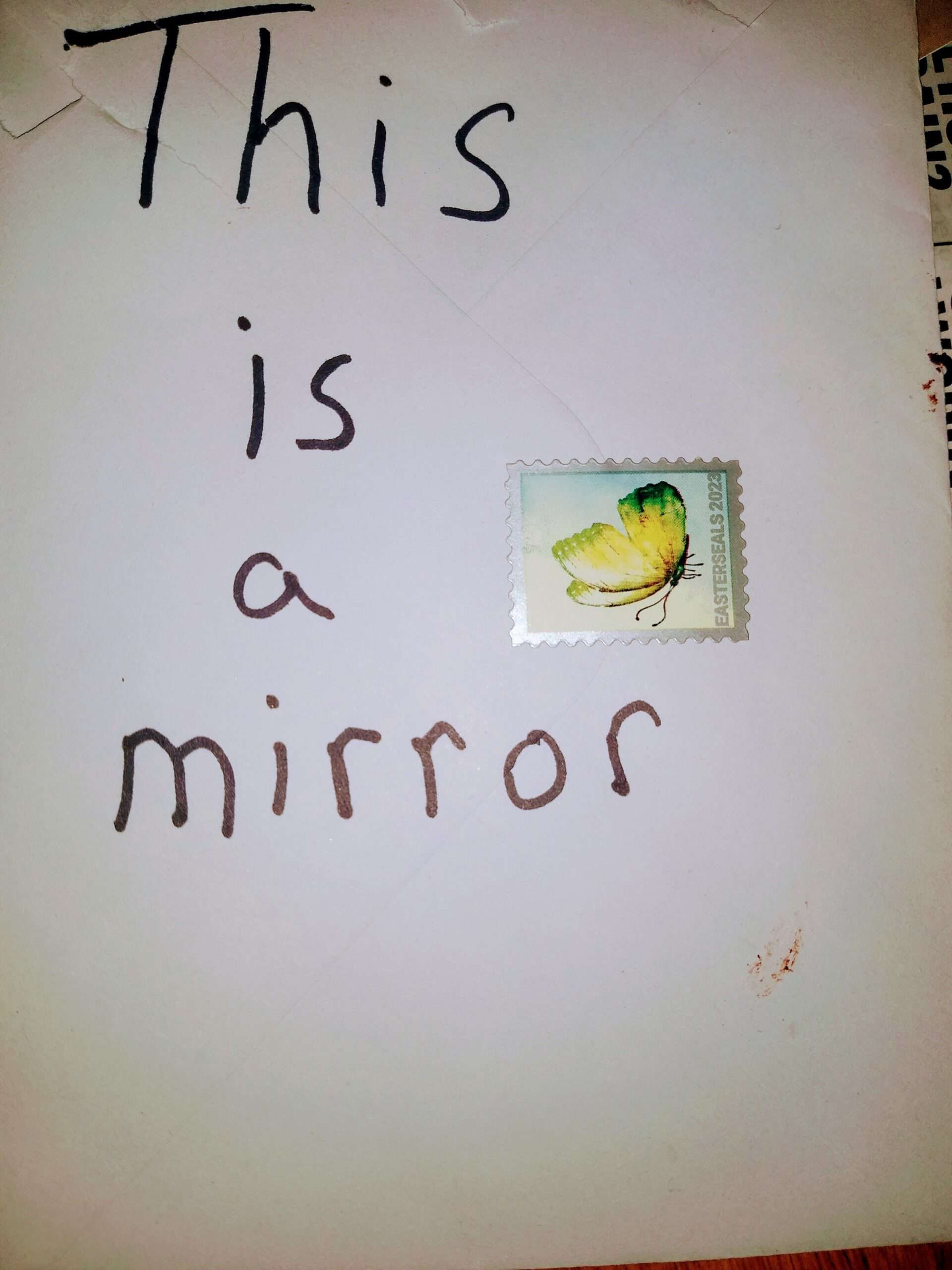
*******
NEXT: Ethnic Politic
And previously…
- Prologue/Series Bible
- Chapter One: I Was a Librarian’s Assistant (Pt. 1)
- Chapter Two: I Was a Librarian’s Assistant (Pt. 2)
- Chapter Three: Robin Roundabout
- Chapter Four: How Did Helga Get in Here?
- Chapter Five: Boy Our Embarrassment
- Chapter Six: Once I Was a Little Light
- Chapter Seven: Sacrificial Greed
- Chapter Eight: Dreams Like This
- Chapter Nine: Whose to Tell
- Chapter Ten: The Dead Weight
- Chapter Eleven: Non-Causal Time
- Chapter Twelve: The Fanfic of the Book of the Movie
- INTERSTITIAL – 3.0: Back and Forth and Back Again
- Chapter Thirteen: Batman!
- Chapter Fourteen: Aged Out?
Nothing in There is Nothing Left to Say (On The Invisibles) is guaranteed factually correct, in part or in toto, nor aroused or recommended as ethically or metaphysically sound, and the same is true of the following recommendations we hope will nonetheless be illuminating to you, our most discriminating audience.
Pussy, King of the Pirates. Acker, Kathy. 1996. Grove Press.
The Adventures of Una Persson and Catherine Cornelius in the Twentieth Century. Moorcock, Michael. 1976. Quartet Books.
Therese and Isabelle. LeDuc, Violette. 1966. English translation by Sophie Lewis. The Feminist Press. 2015.





